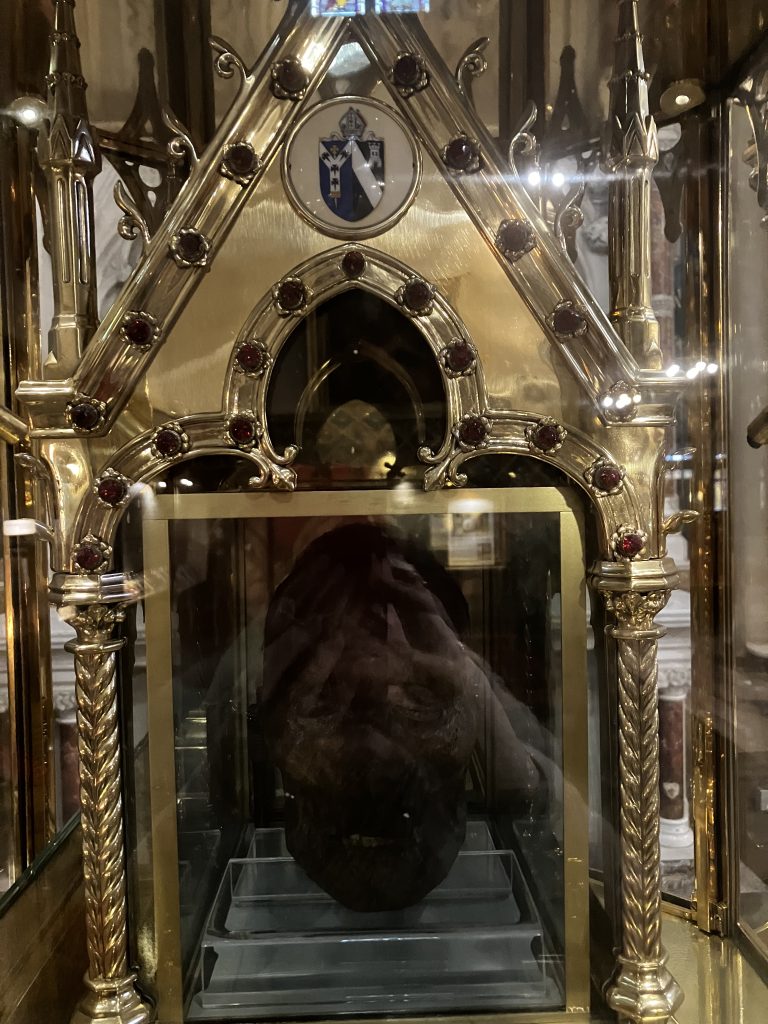
Yes, I can see that my reflection is messing with this head in a box. I’m sorry. But this is the first thing we went to see on our day touring around Drogheda and the surrounding towns.
This head belongs to St Oliver Plunkett, He was born in 1625 in England, made his way over to Ireland at some stage before doing some things that really annoyed the English, like teaching stuff to Irish kids and making them literate. You know, that kind of thing.
Anyway, he was hung, drawn and quartered at Tyburn Hill in London in 1681. Friends rescued his head from the fire and brought it back to Ireland, where they stuck it in a box in a church.

Here’s his profile.
He was made a saint in the 70’s, which was exciting for the Irish because he was the first Irish saint in 700 years.
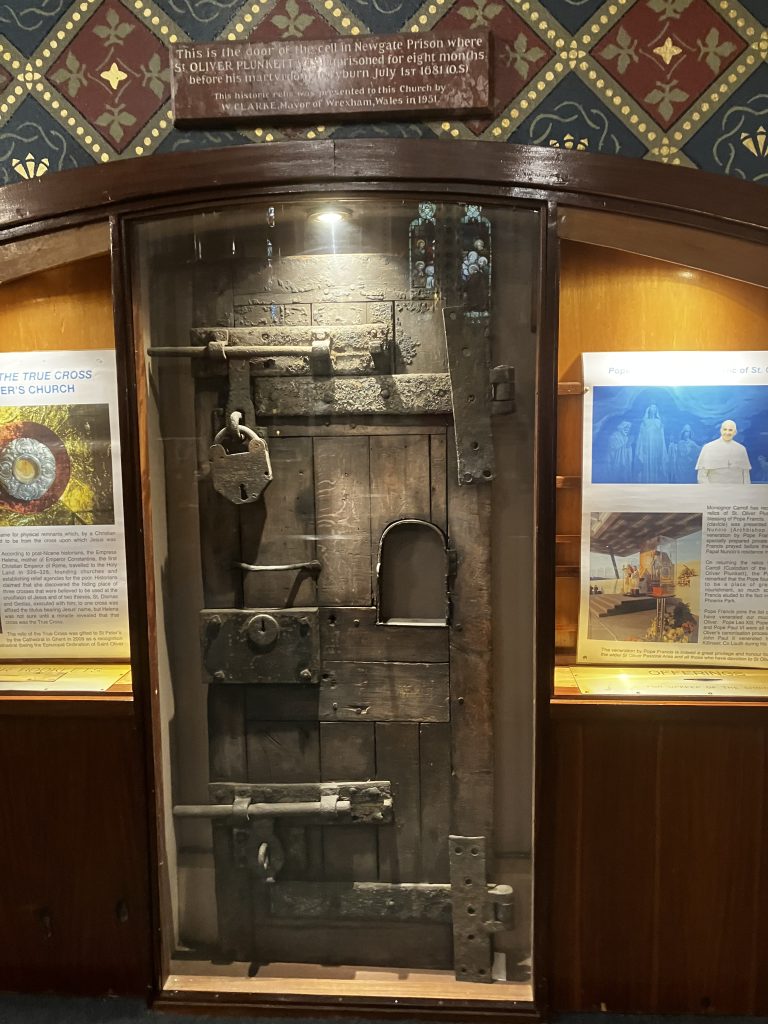
I thought that this was a little insensitive, though. They’ve placed the actual door to his jail cell right where he can see it. You would’ve thought that he’d have seen enough of it when he was still alive.
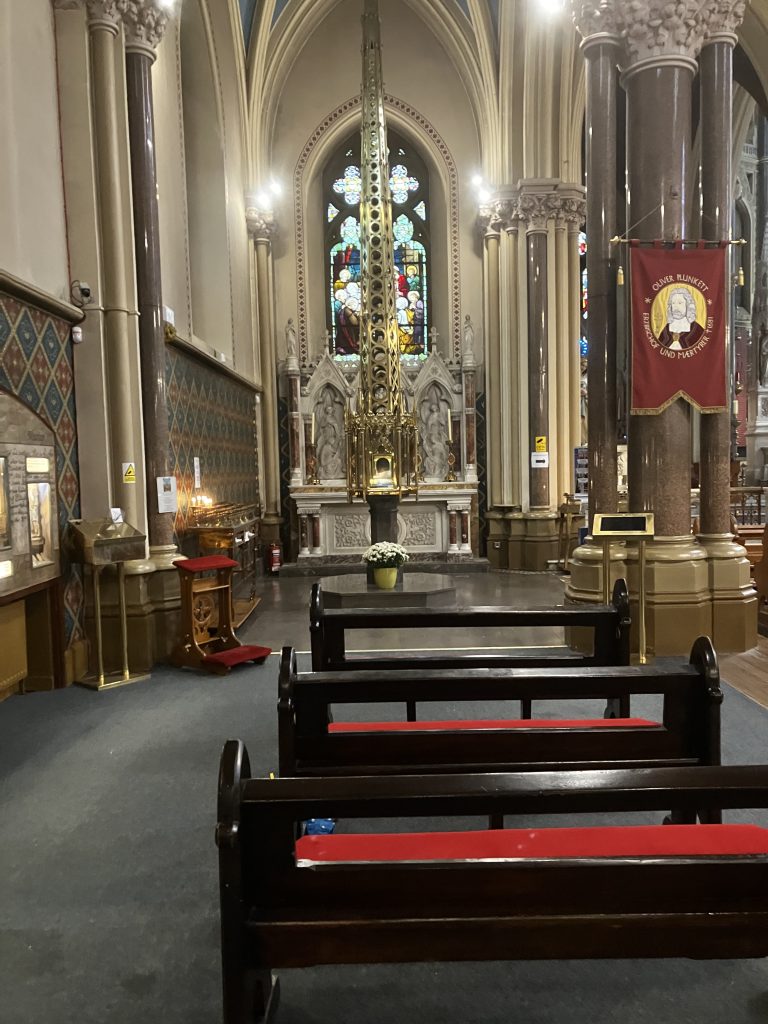
That’s what it looks like, just to the left of the altar. There’s a piece of the one true cross somewhere up on that altar, too.

We walked up a steep hill to Millmount Fort, which looms over the town of Drogheda. Read this information sign… it’s dark humour is impressive.

After gazing at the view of the town, we walked down the stairs to street level, crossing this bridge with a colourful display of blooms.
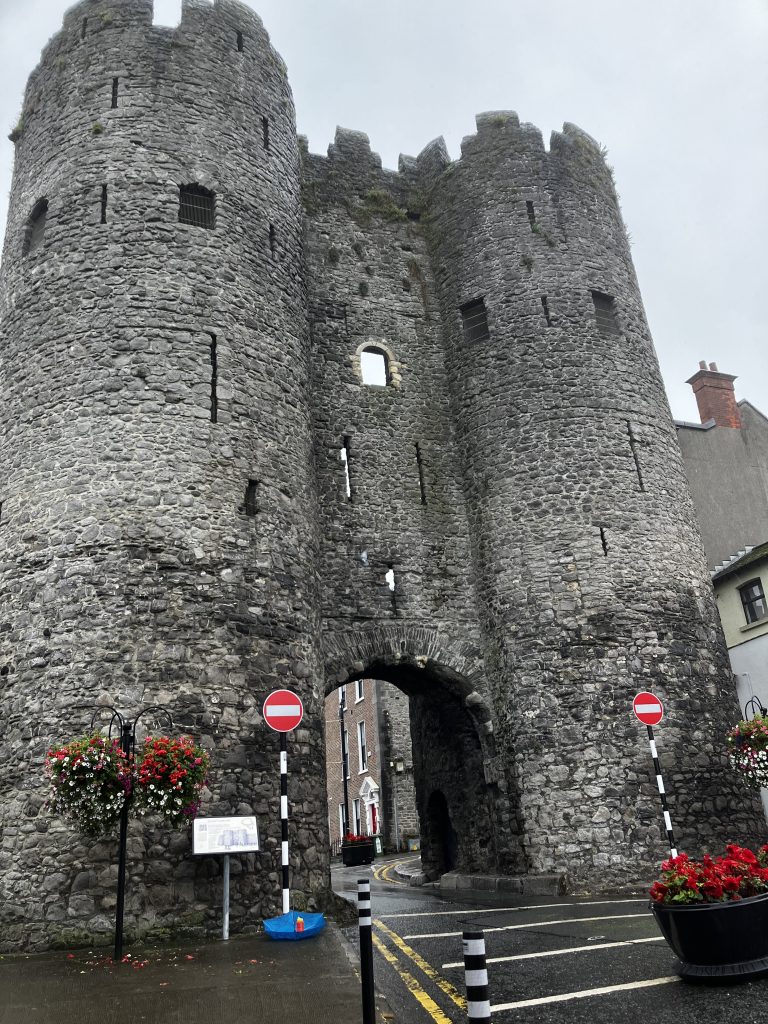
Here is the only surviving part of the Norman-built wall that originally encircled the whole town. James said that they used to let traffic drive through it, until a truck driver got stuck. Now it’s blocked ogg by some lovely red tubs of geraniums.
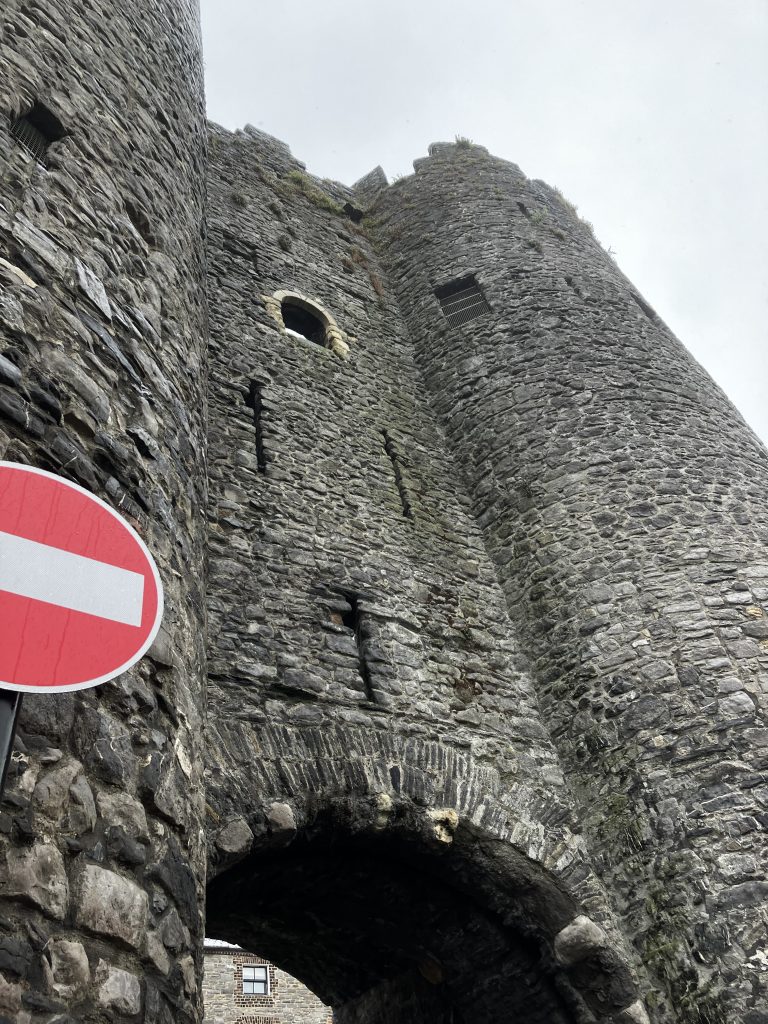
Quite tall.
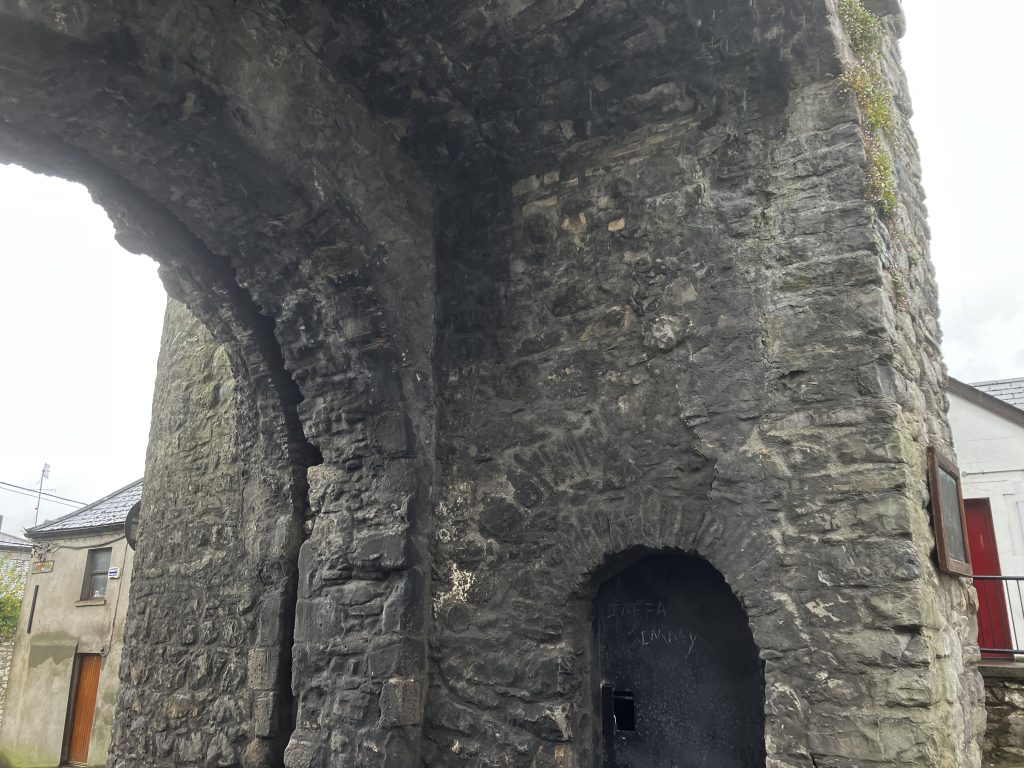
To the left you can see the groove where the portcullis used to be.
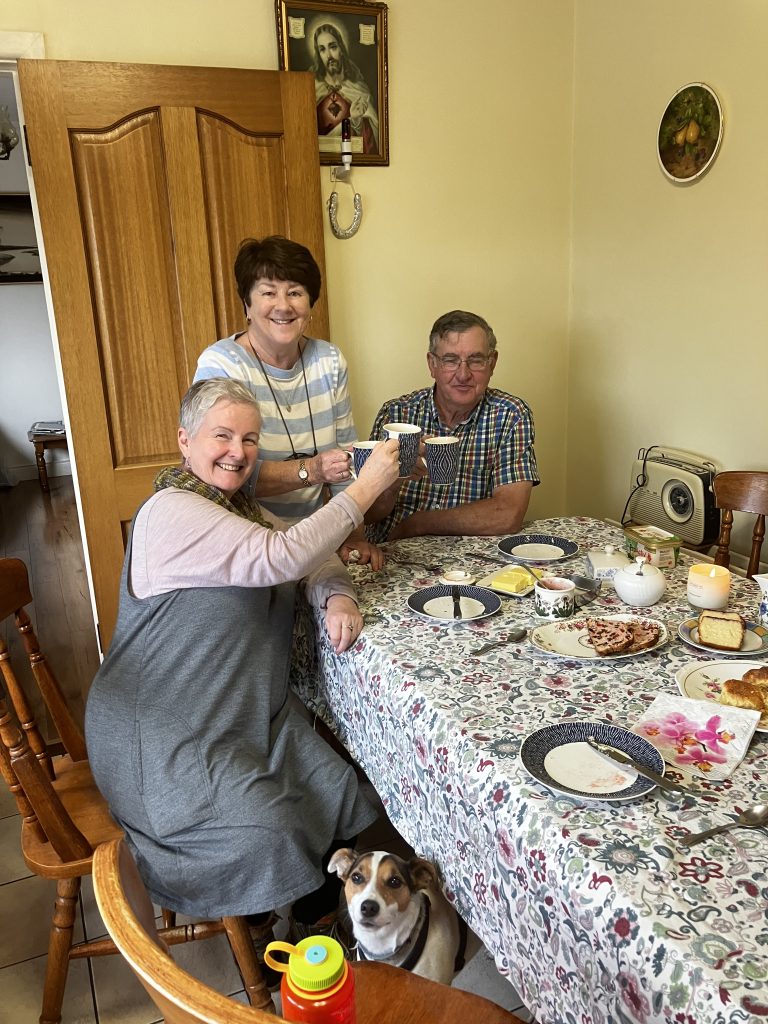
Then I was whisked off to a genuine Irish farmhouse for some morning tea,
There am I in my grey merino sack dress, with Toby the dog peering out from under the table beside my Antarctica pee bottle, with James’ parents having a toast with our cups of tea.
Scones with homemade raspberry jam and cream, a type of fruit cake called Brack and another cake I didn’t get to try as I was too full. They are lovely people.
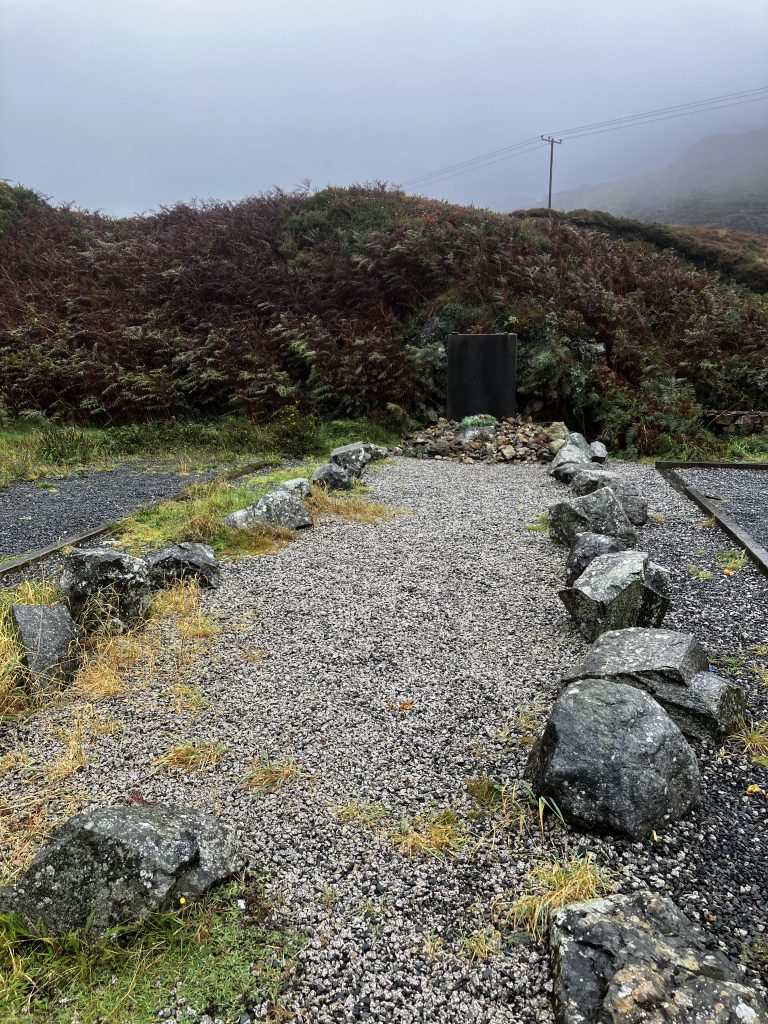
Once on the road again, we stopped at this cracking site. It’s the burial ground of the 7 foot tall lady. To be fair, it’s definitely a very long grave.
Here’s the story:
The Long Woman’s Grave or “The Cairn of Cauthleen” is the grave of a Spanish noble woman who married Lorcan O’Hanlon, the youngest son of the Chieftain of Omeath.
On his death the Chieftain ordered that his lands be divided between his two sons, Conn Óg and Lorcan.
However Conn Óg tricked his brother Lorcan by bringing him up to the Lug or hollow in the mountains, telling him that he would give him the land” as far as he could see”.
Lorcan was dismayed as he looked on at the mist and the bleakness of the hollow which was now his legacy.
Lorcan owned a ship and begun trading in the East, making his fortune and becoming prosperous.
On one of his voyages to Spain he bravely saved the lives of a Spanish nobleman and his daughter.
Lorcan was enchanted by Cauthleen and the pair made a handsome couple; she was 7ft tall, only three inches smaller than Lorcan.
Cauthleen was already engaged to be married but was wooed by Lorcan’s professions of love and the promises of the good life that they would have back in Omeath. The pair eloped when the couple arrived in Carlingford Lough the locals were enchanted by this tall beauty adorned with jewels.
The couple set along the mountain path until they came to the Lug or Hollow in the rocks.
Lorcan bade his bride to stand in the centre and look around as far as she could see as he “Was queen of all she could survey”.
Cauthleen looked around, so great was her disappointment and the realization of what she had left behind in Spain, she fell to the ground and died.
Lorcan was horrified that his dishonesty had caused his bride to die and flung himself into the murky waters of the marsh at the crossroads.
His body was never recovered.
The locals found the long woman’s’ body, and dug a grave for Cauthleen in the “Lug Bhan Fada” (Long woman’s hollow) where she lay.
Each person laid a stone on the grave to raise her burial cairn and here she sleeps today in the hollow of her disappointment and unfilled promises.”
***
I love first off that a Spanish noblewoman had an Irish name, and also that she fell down and died from disappointment. That’s hardcore.
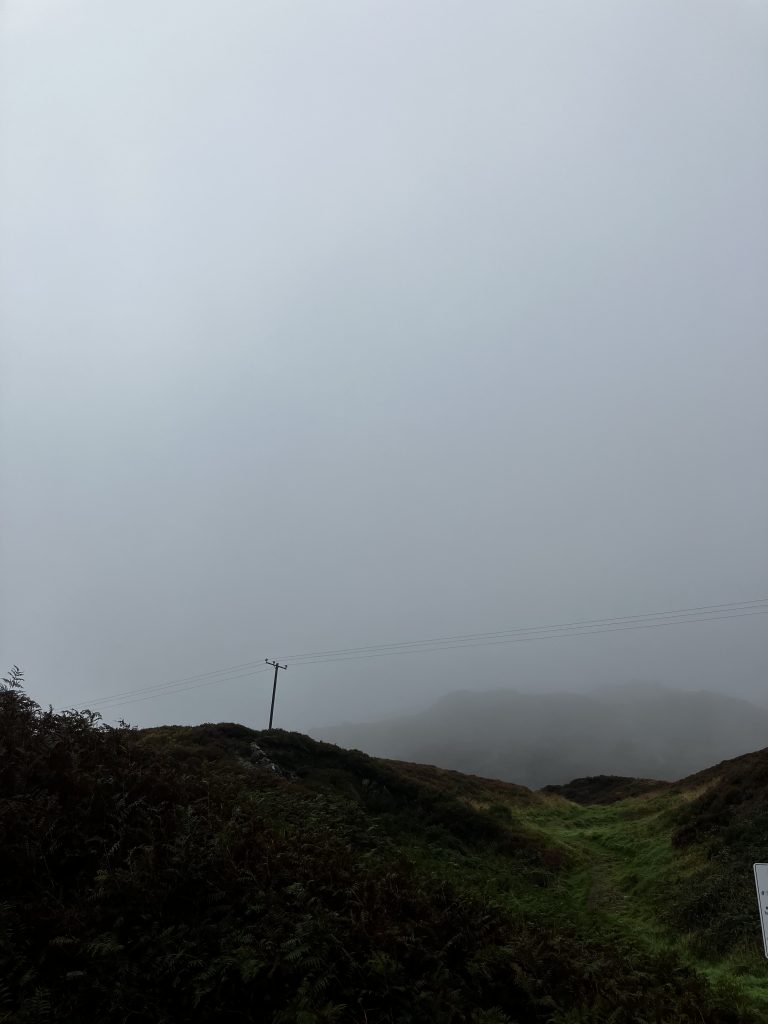
This is the sight that caused her demise.
We kept driving up into the hills. The clouds were rolling in, as it hadn’t stopped raining all day. The hills were impossibly green, especially to the eyes of an Australian.
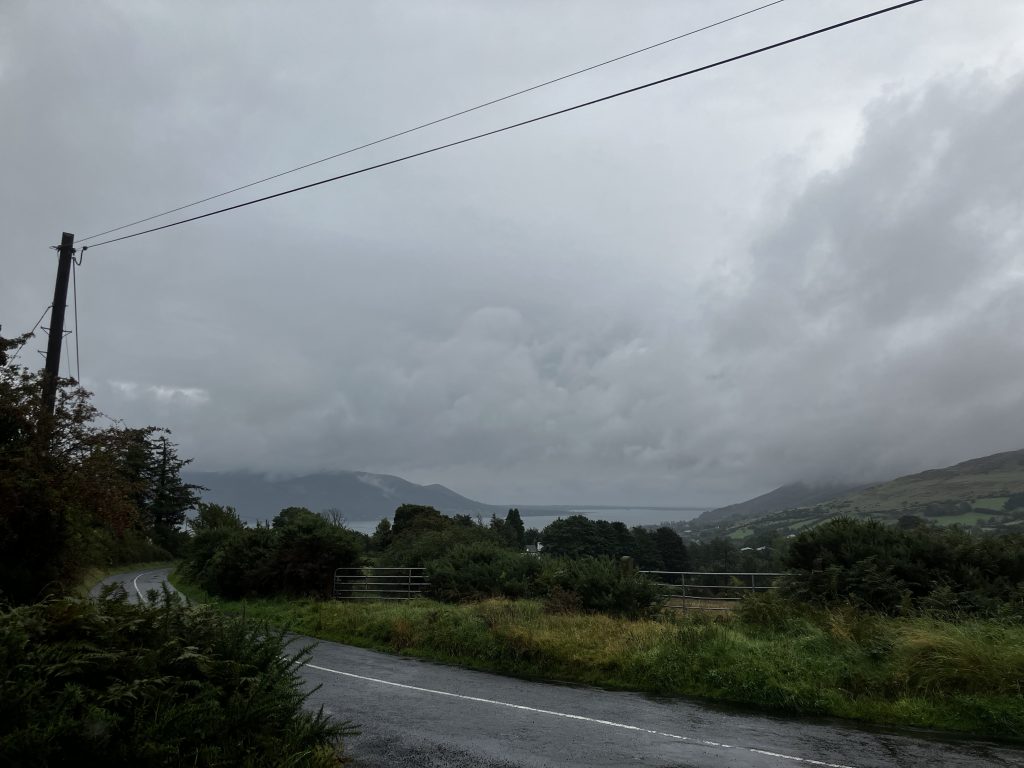
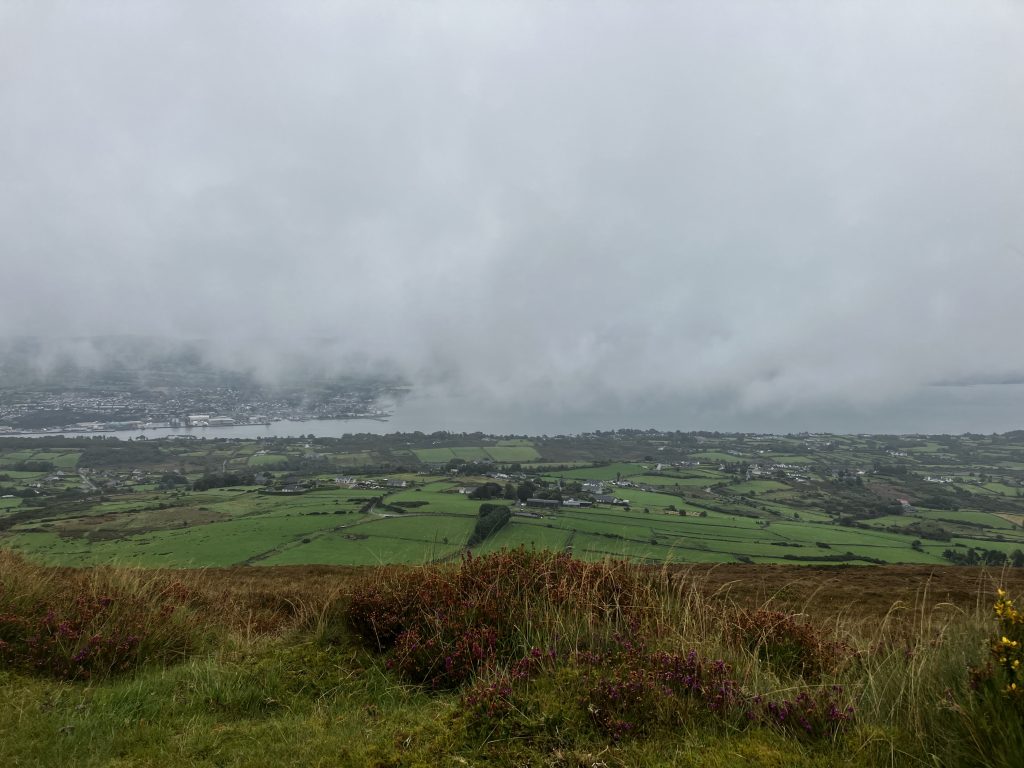
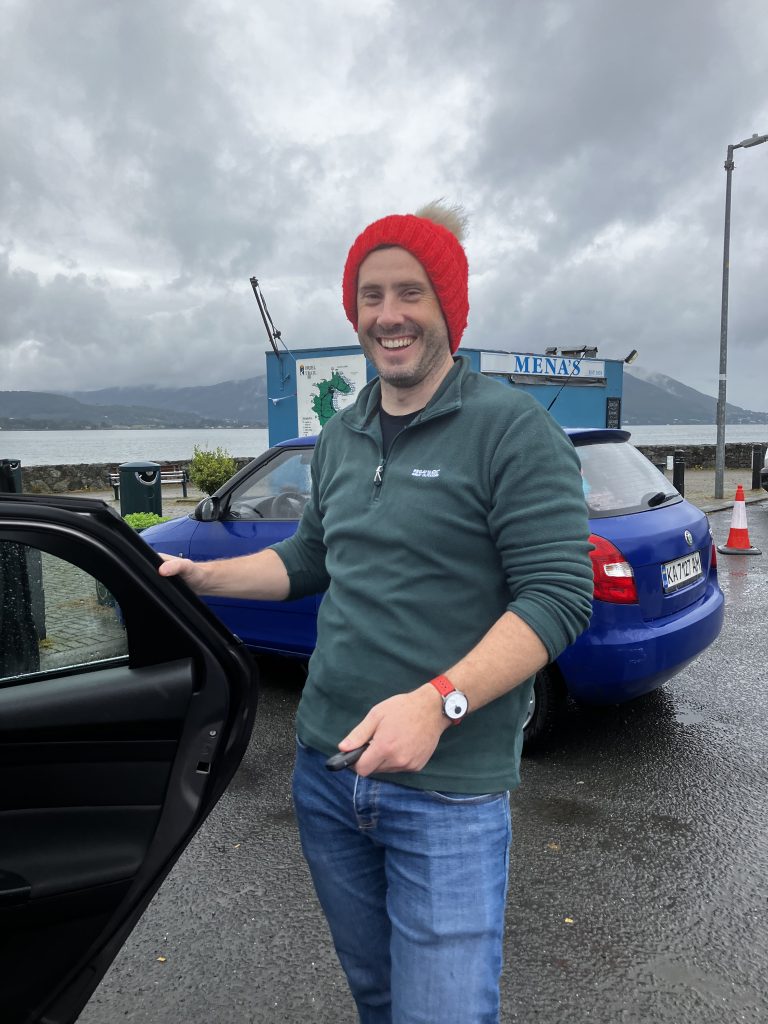
We arrived at the very pretty little town of Carlingford, right beside the sea, where James pulled the very same red hat out from the car that I followed around North Korea when we were on the tour.
I was so happy to see it again!
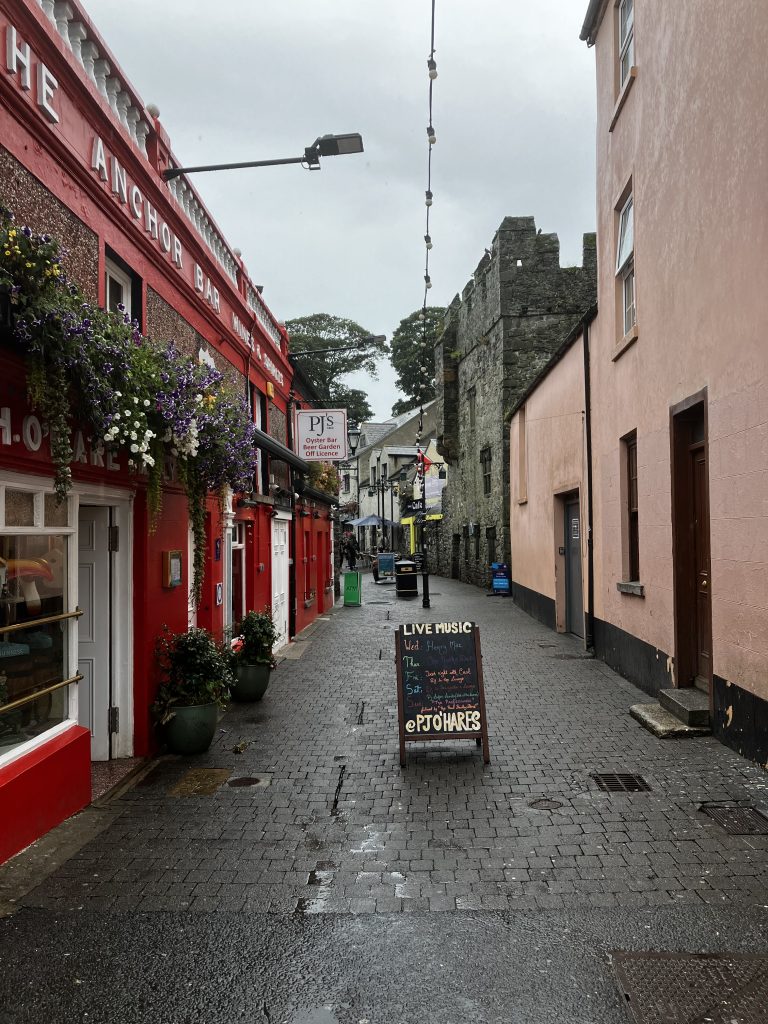

I mean really. How can you not be enchanted by it, even in the rain?
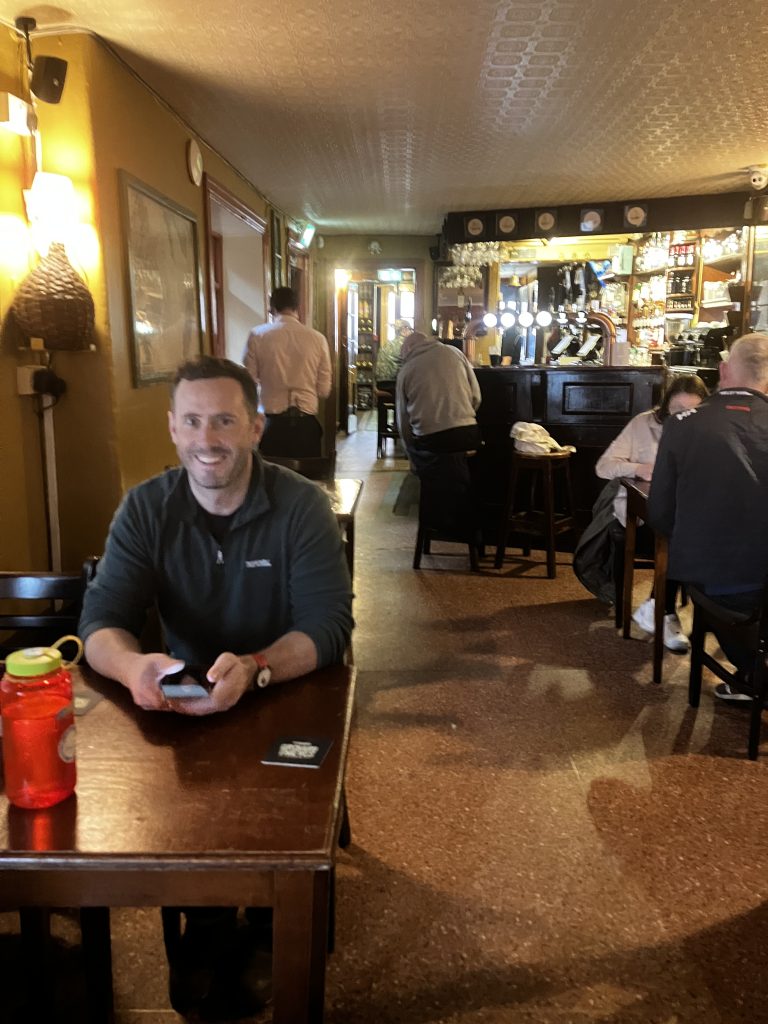
We ducked into a little pub for lunch, where I had the best seafood chowder I’ve ever had.

Old buildings are right next to the new.

Here’s the Carlingford version of the town gates. Down on the left hand side was a dank, wet cell that they used to use as a holding cell.
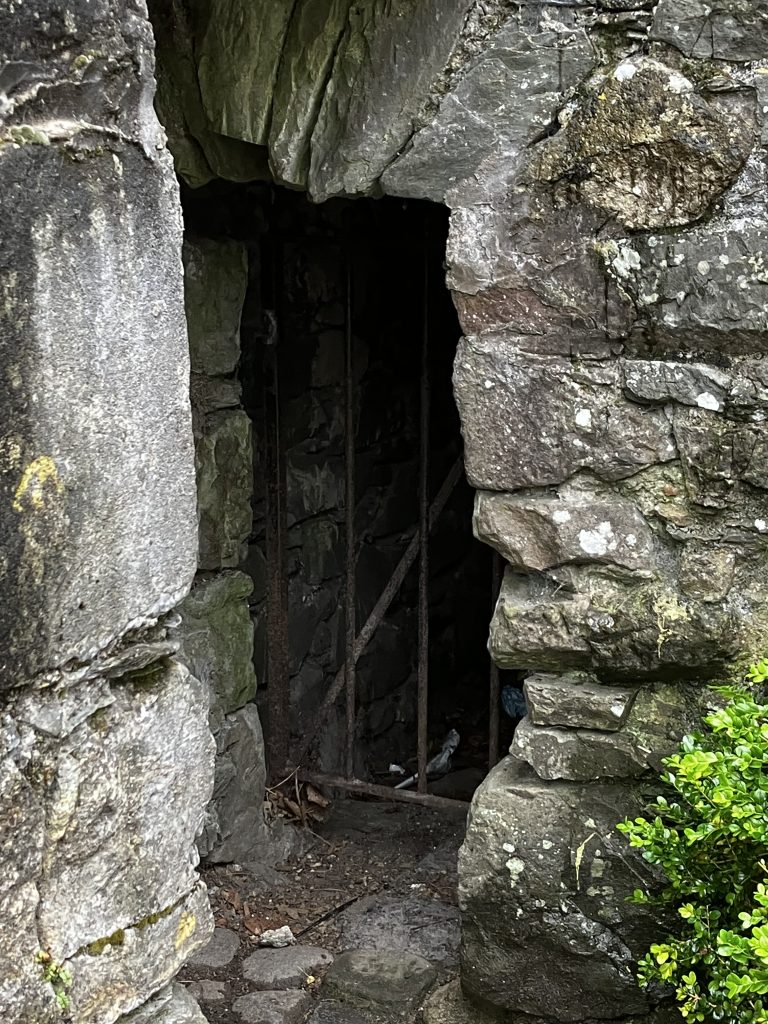
That’ll sober you up!
we were looking for the ancient monastery that was close to the centre of town. We took a detour into a churchyard, but that wasn’t it. Then James found it.
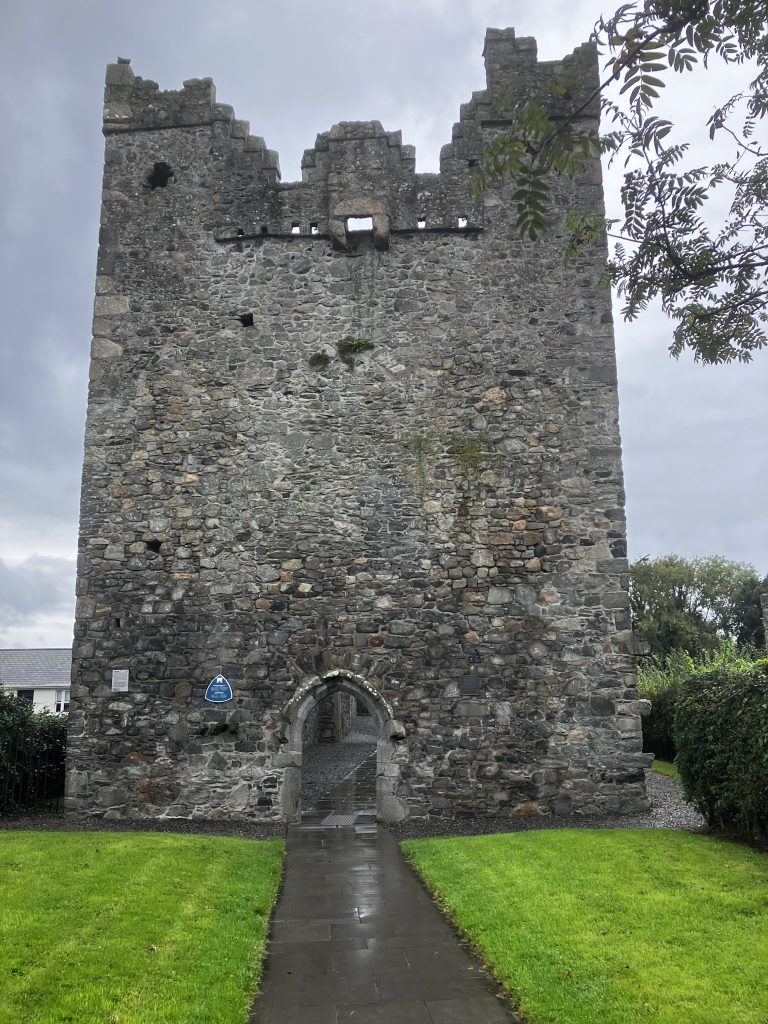
This place was built in the 14th century and was torn down when Henry VIII got rid of all the monasteries and kept their lands and wealth for himself and his friends. *cough John Petre from Ingateston Hall, for example cough*
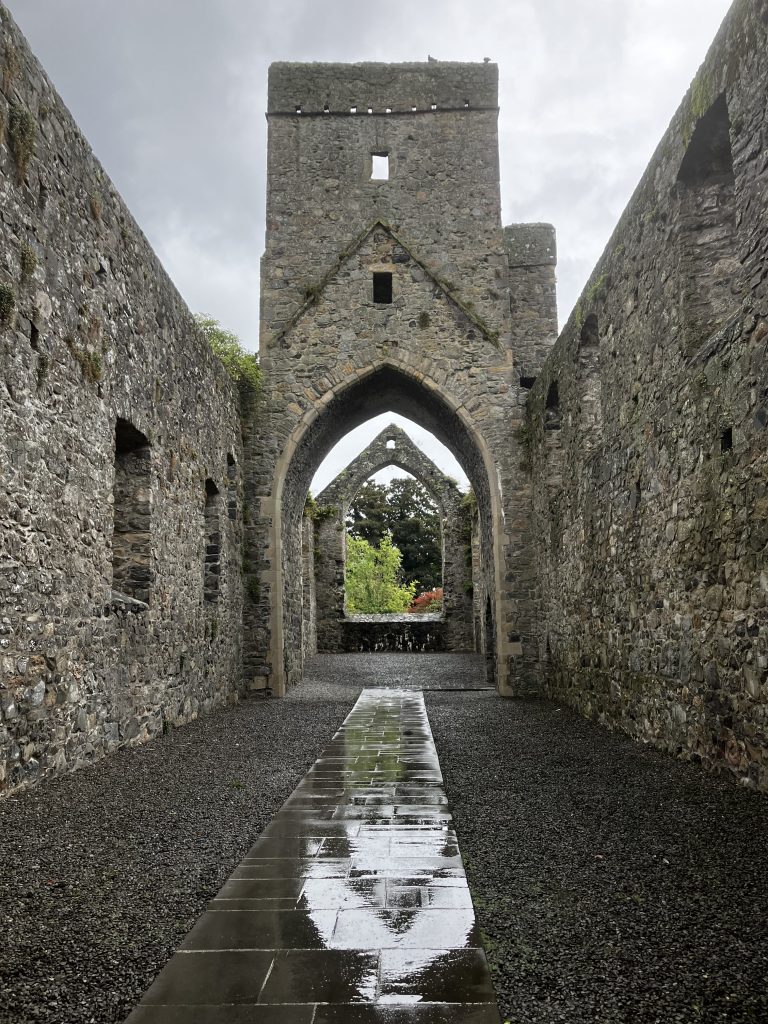
The only things we could hear was the falling of the rain and the crunch of the stones under our feet.
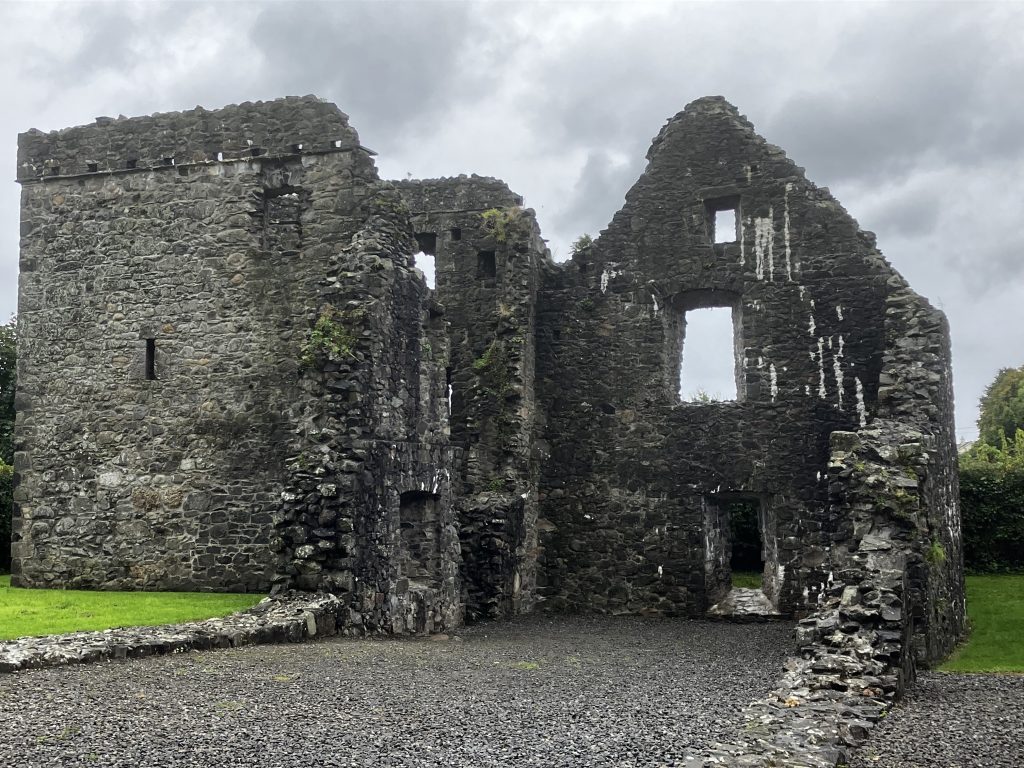
These walls were intended to stay up for centuries. It was sad to think of all that effort wasted because Henry wanted to divorce one woman to marry another.

Then we stopped in at a gift shop, where I would’ve bought this metal sculpture if it wasn’t so heavy. See? Only taking carryon is saving me a fortune!
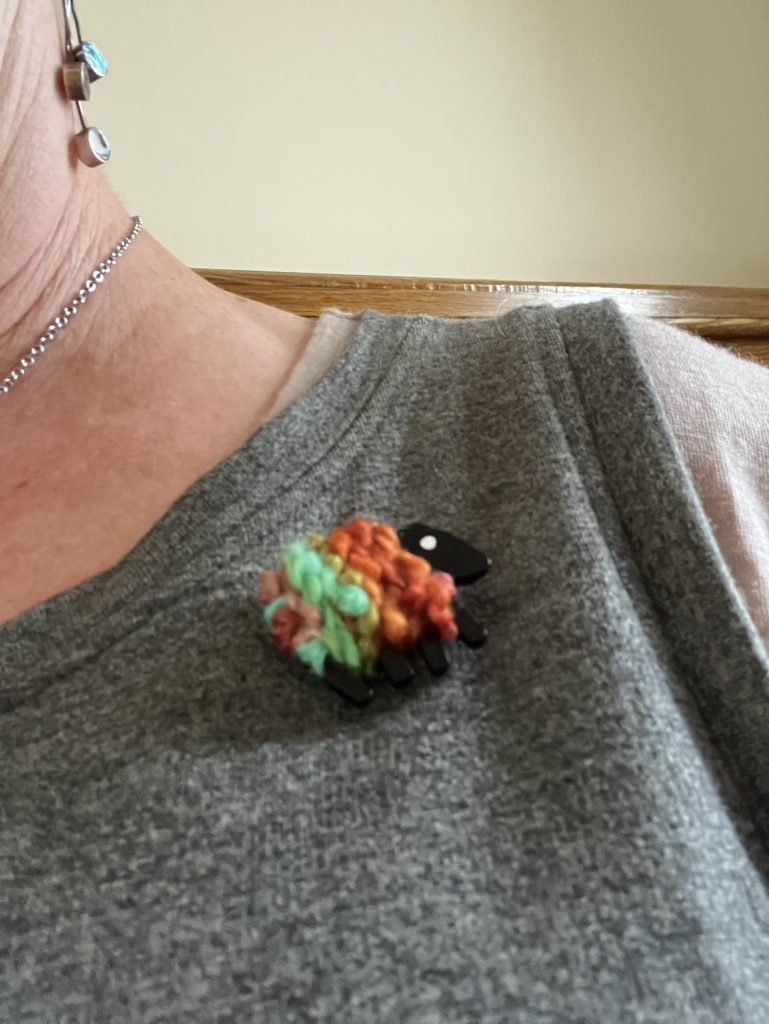
James bought me this little sheep with Irish colours as a souvenir. It’ll travel around all of Ireland with me.

A quick stop at the ruined castle overlooking the town, and then we were off again.
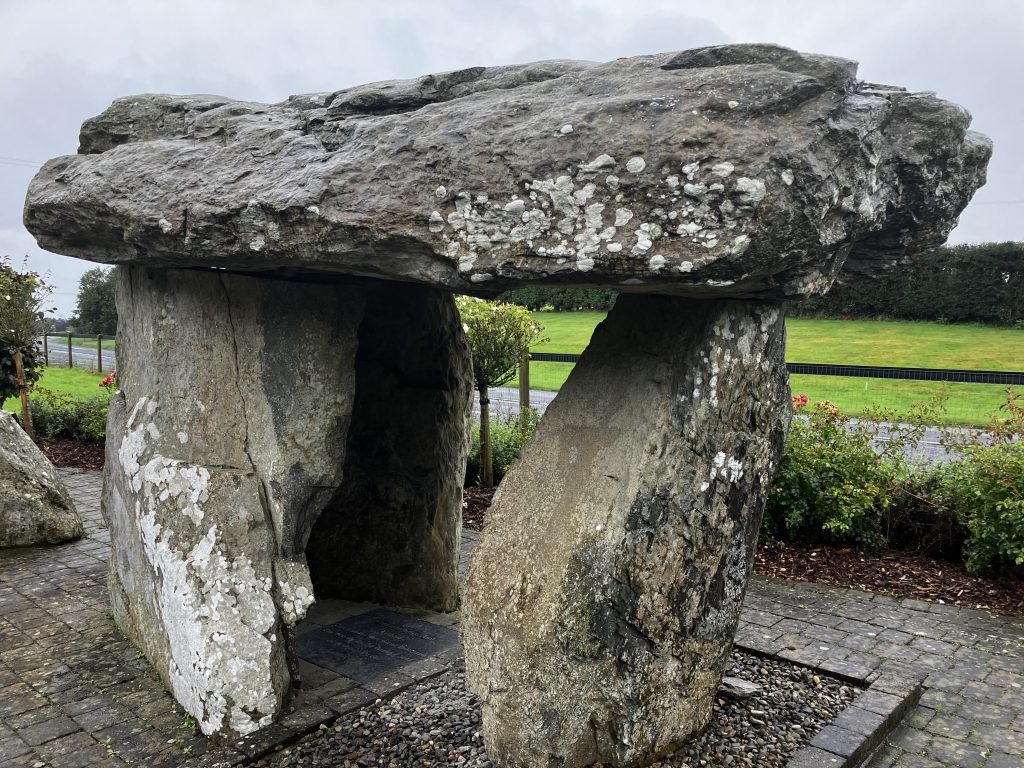
Just in case the tour doesn’t take me to see the ancient Celtic burial sites in the West, we stopped at this little one.
Then we went to a place called Masterboice, a working churchyard that has a huge round tower and three enormous Celtic crosses.
Because if one is good, then three must be absolutely great.

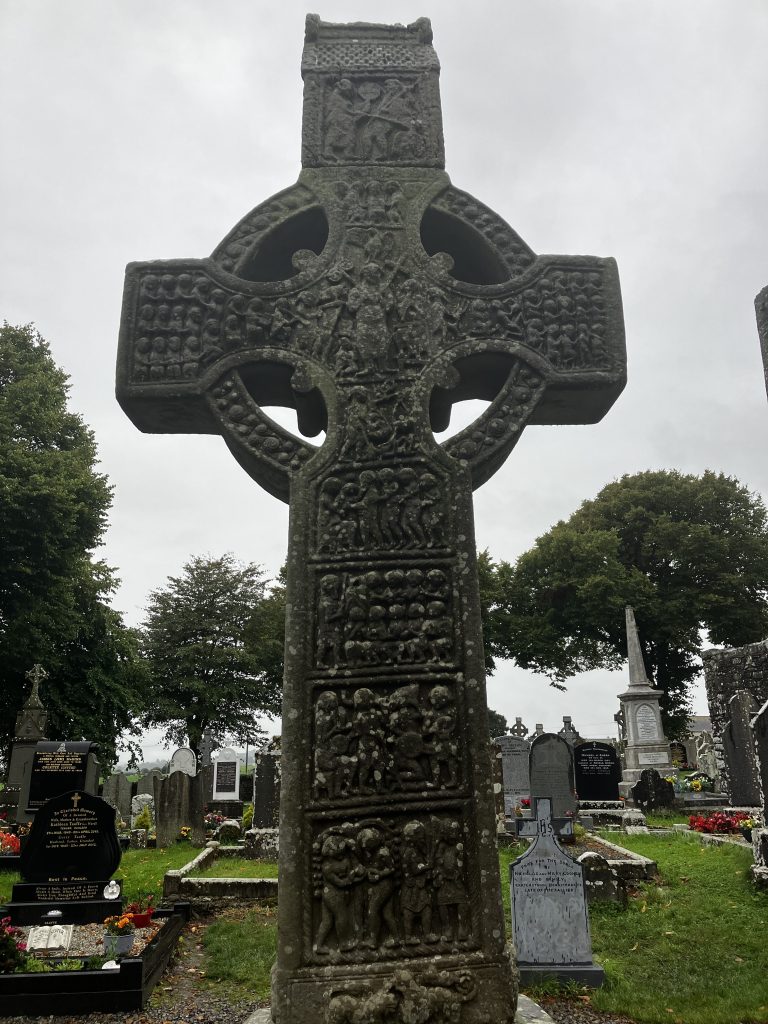
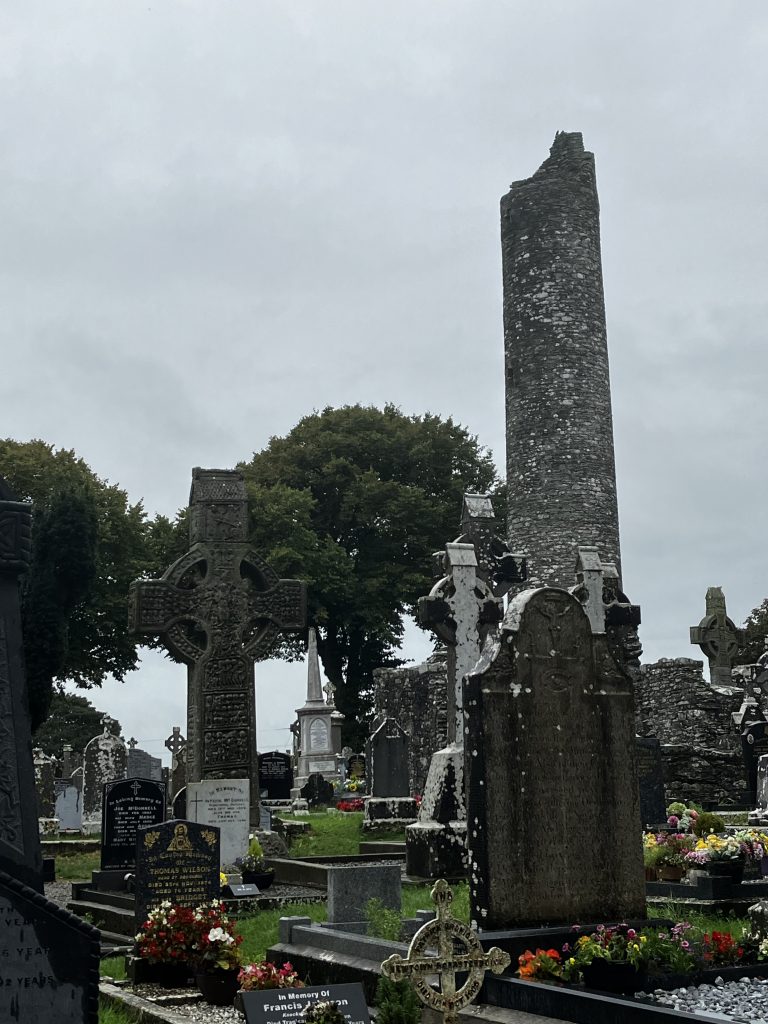
Here is the round tower with the top bitten from it, probably by lightning.Many of the graves had Celtic crosses on them, in imitation of the real ones. One grave had soccer balls at the end. To each their own.
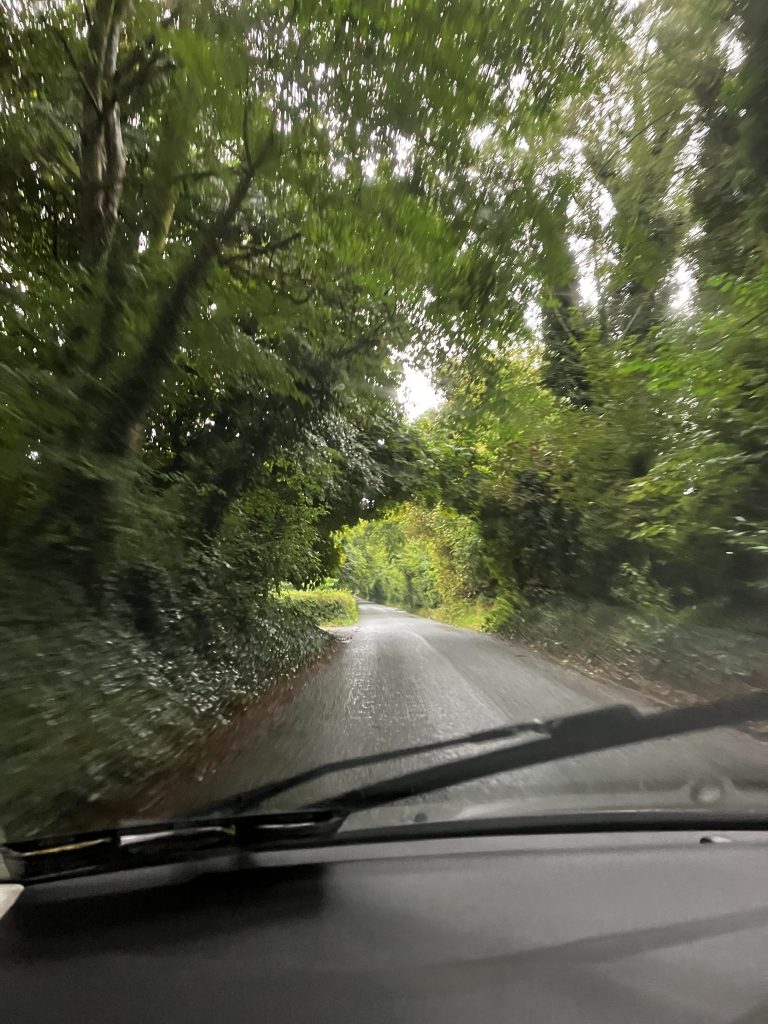
Then we drove through the Irish country’s to one last place. And this place was amazing.
Mellifont Abbey. This place was the best at giving an idea of just how big these places were and how vast a loss they must have been to the poorer communities when the monasteries were destroyed.
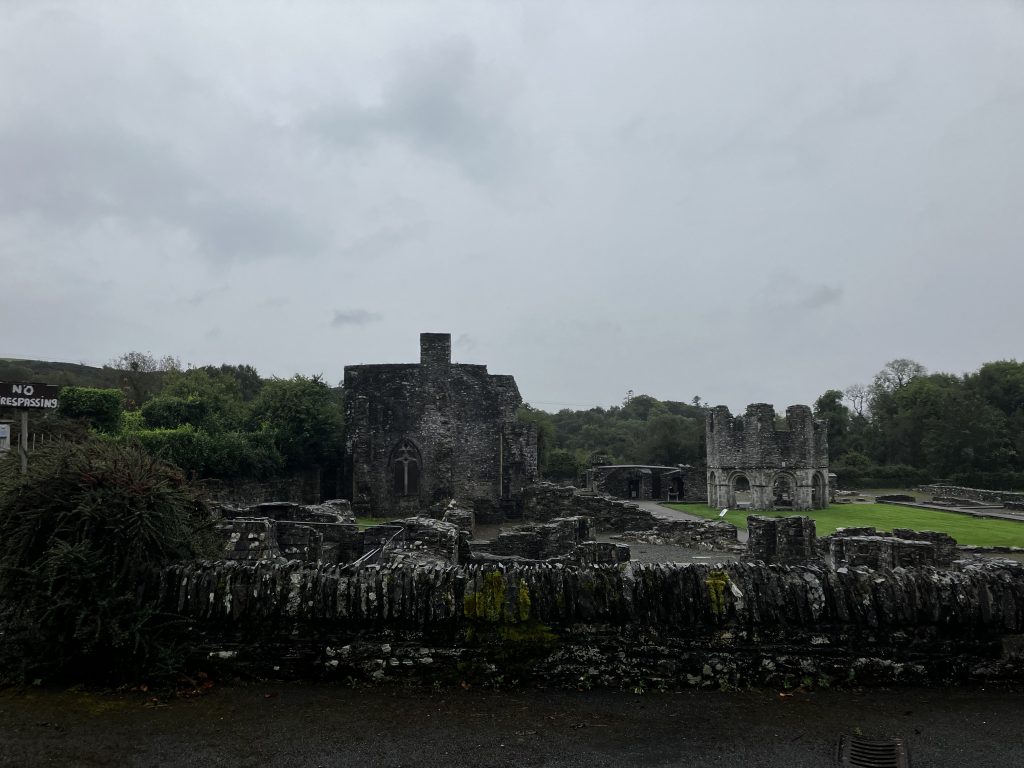
This site wasn’t just one building. It was set out over quite a large area, with the walls and foundations of many of the original buildings still clearly visible.
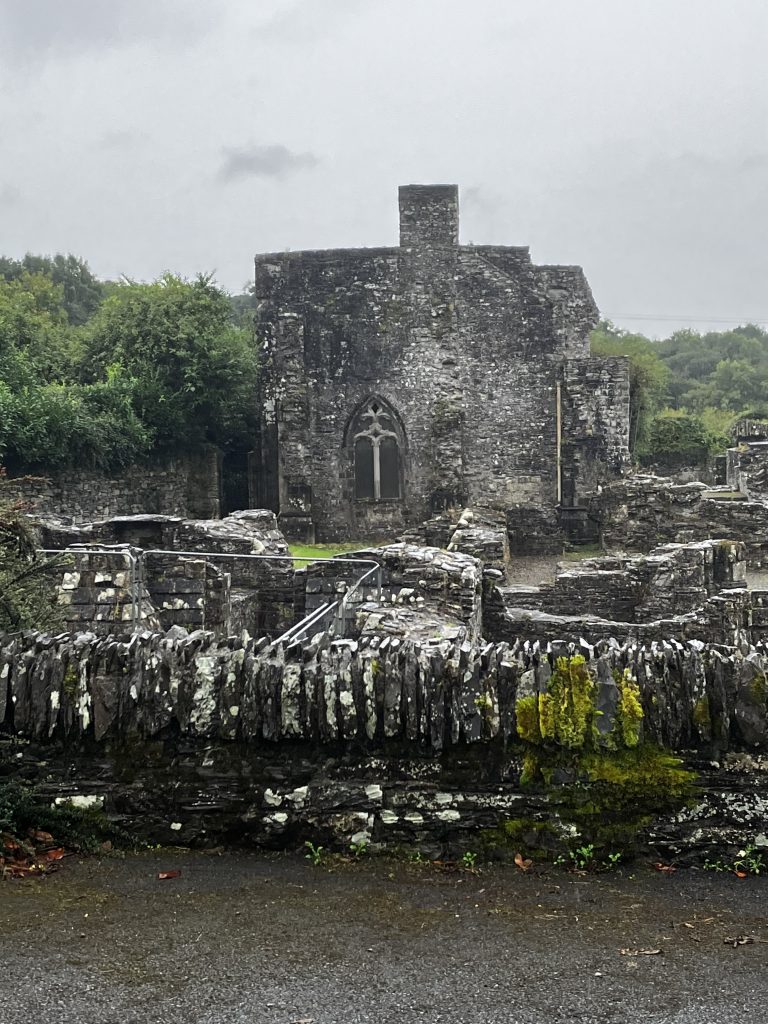
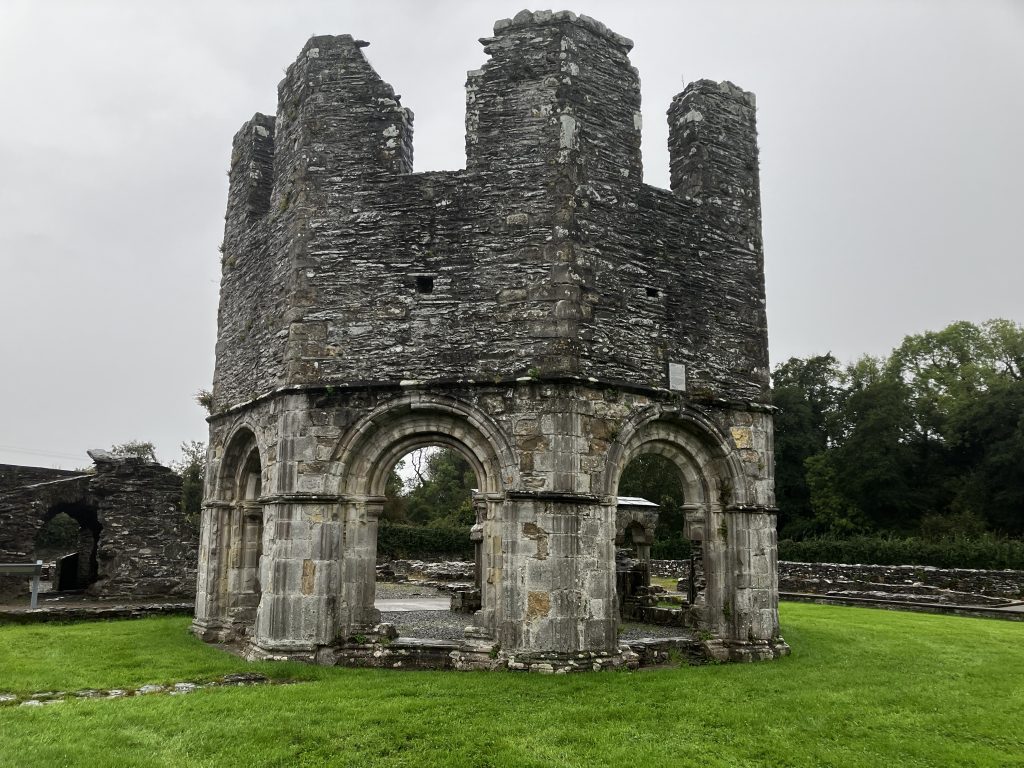
They think that this building was where the monks would wash their hands and purify themselves before mass.
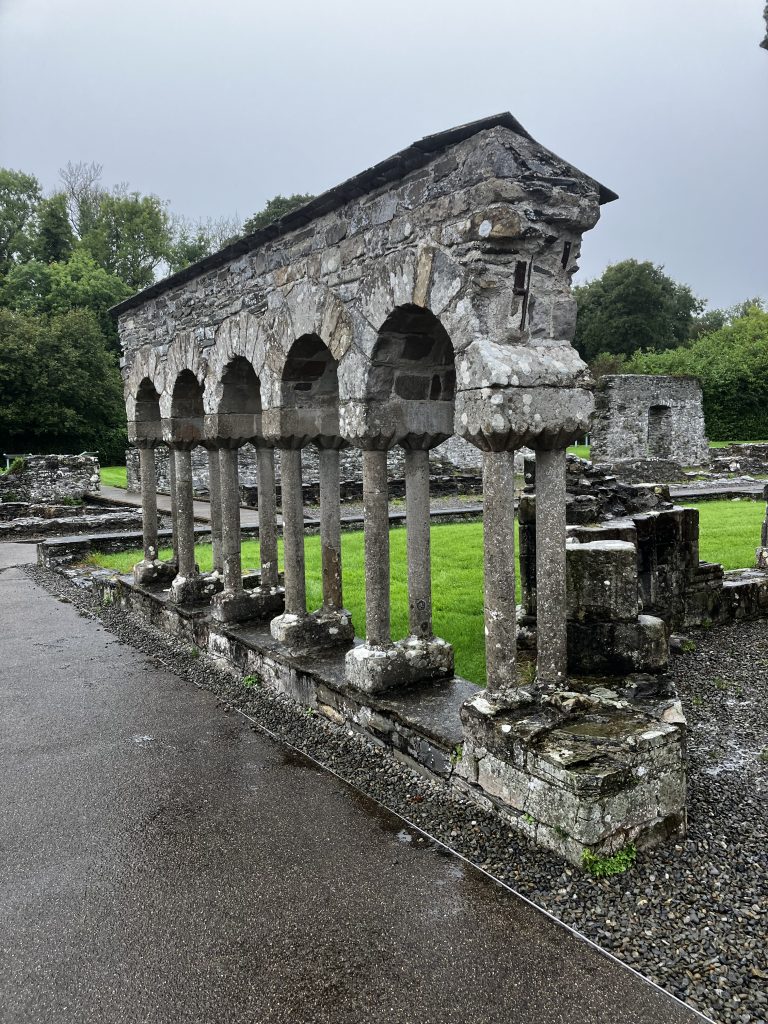
This was tucked in behind it.
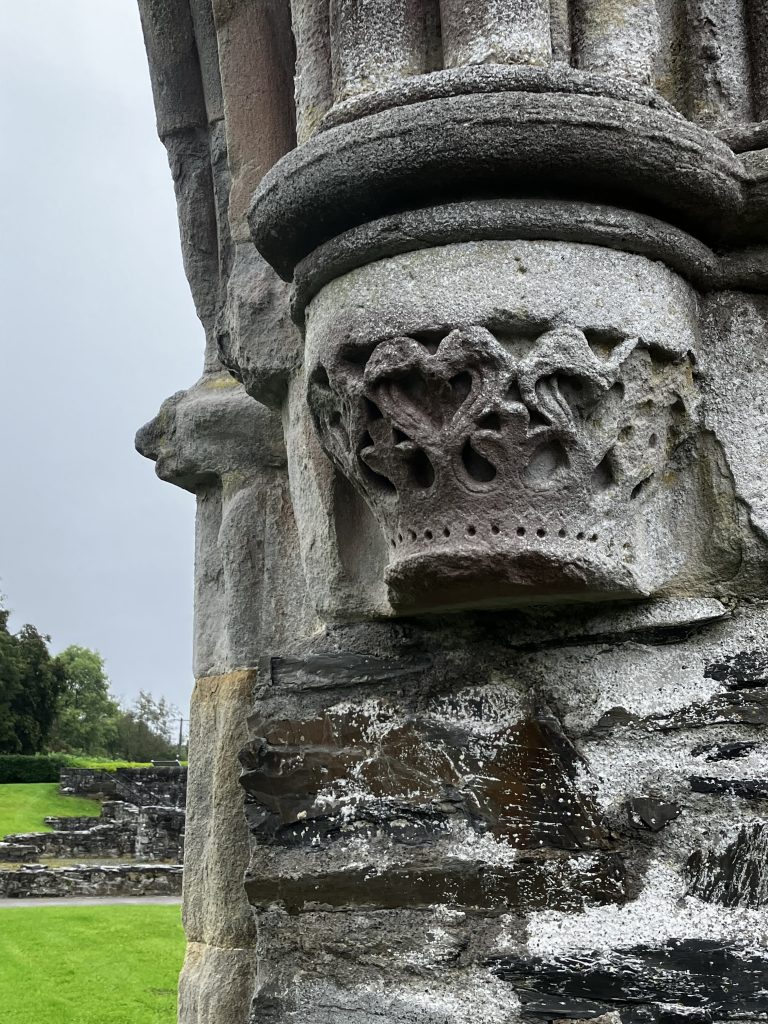
Some decorative pieces still remain.
As we walked back to the car, the sound of a briskly flowing stream was right on the other side of a hedge. The monks had chosen this place carefully. And now, here we are.
I’ve got to say, we covered a huge amount of ground in 2 days. I even got to see the house James is building – stunning polished concrete floors – and later that night we went out for a tapas dinner, then to drinks at a pub. There we met a New Zealander who was staying at the same hotel I was.
I went back to the hotel, while James went off for drinks with some work friends.
The next morning I stayed in and wrote blog posts. I was nearly a week behind.
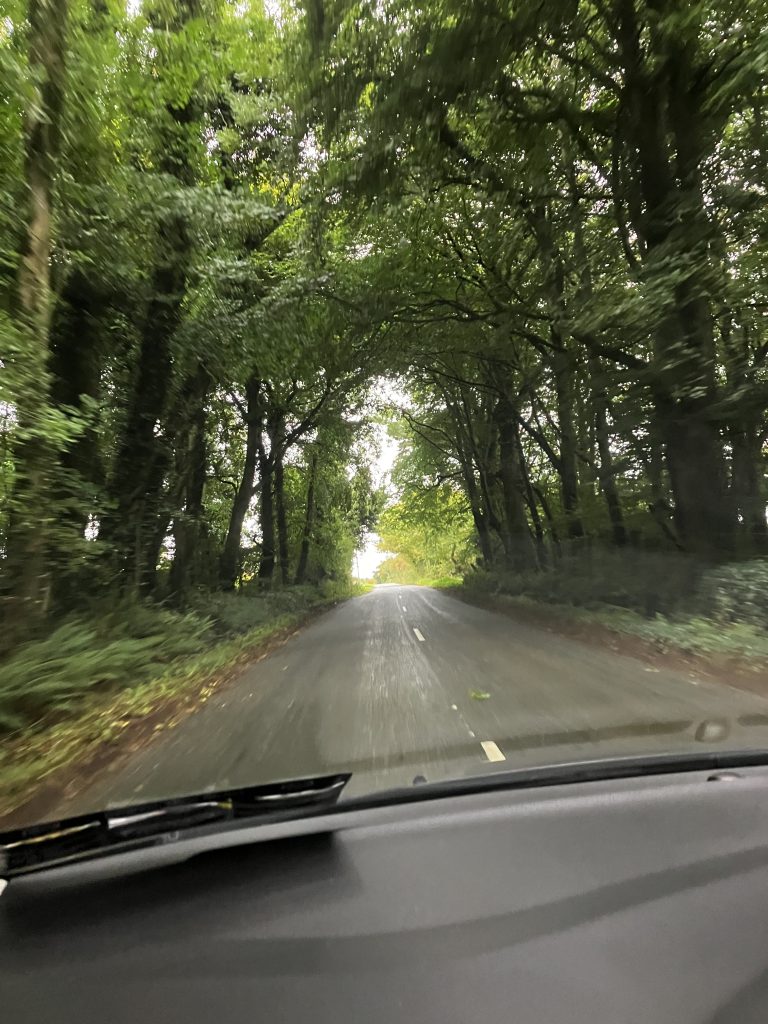
James swung by, picked me up and we took the scenic route to the hotel where I’ll be joining the tour. We had lunch, said our goodbyes, and I wrote all afternoon to catch up.
The tour group has around 26 people in it, I think. A sprinkling of Aussies, a few Brits but the majority are American. Funnily enough, there’s a disproportionate amount of retired teachers and engineers.
They don’t appear to be party animals. Most people were going back to their rooms at 8 PM. Still, we’ll see. It’s early days yet.
It’s now 10PM and I’ve totally caught up. I’m going to schedule the publishing time, then I’m going to bed. It’s a big day tomorrow… we’re heading into another country.
Northern Ireland.
Leave a Reply